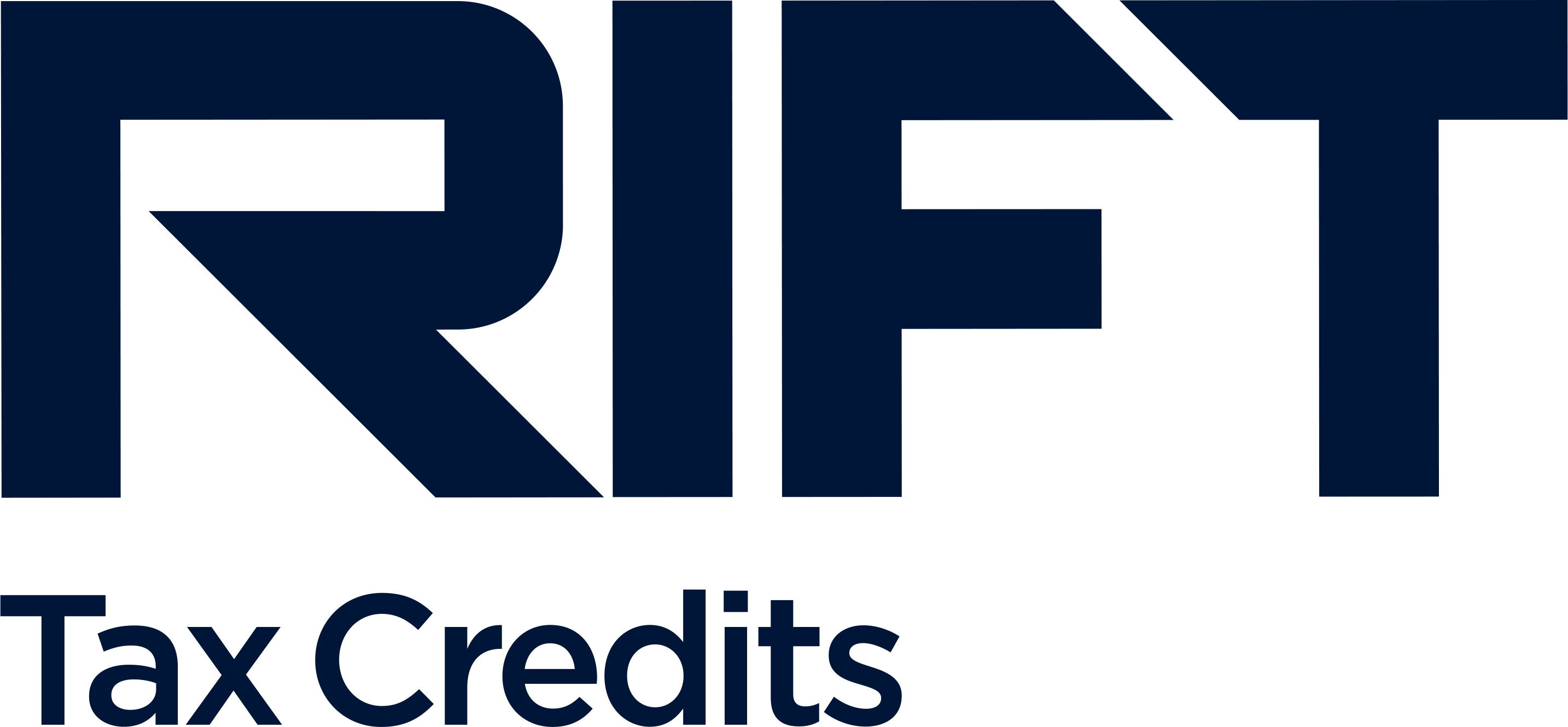R&D Tax Credits FAQs
At RIFT’s first R&D Tax Credits webinar with the Chartered Institute of Building (CIOB), we invited attendees to put their questions to a diverse team of industry experts.
One of the qualifying questions is “Have you gained new knowledge for your sector?” What does sector mean here?
The "sector" refers to whatever field you work in, so it could mean engineering, software, construction and so on. R&D requires you to overcome a challenge.
If you’re venturing into unknown territory with what you aim to achieve, or maybe doing something that’s been done by a competitor but isn’t shared industry knowledge, then the R&D scheme is there to help alleviate the risk.
Read more about the sectors we've helped claim R&D tax credits.
Will “no win no fee” apply here, since some SMEs don’t have much cash flow?
Yes, it absolutely should! Any R&D company asking for payment up-front should instantly raise alarm bells. Any fee should only be charged on confirmation or receipt of the benefit.
In terms of costs for resources, do you claim based on the charge-out cost?
We claim against the actual cost of employing an individual or engaging with a resource. This will be the cost as incurred by the company.
Read more about costs that qualify for R&D.
What actual cost heads were claimable and what evidence was required – e.g. consultant appointments, time sheets and invoices? Also, how is staff time quantified and made auditable?
There are many costs that are allowed to be included under the scheme, from PAYE staff salaries and subcontractor costs to prototypes and failed tenders.
During your first R&D claim, HMRC understands that your R&D record keeping may not be as robust or clearly evidenced as it should be going forward. After your first claim, though, HMRC would like to see methodology behind your qualifying R&D costs. This would include reasoning surrounding the amount of R&D time attributed against staff salaries, as well as in-depth project analyses with a demonstrated understanding of where R&D lies within your projects.
Is the full cost of the innovative solution recoverable, or just the extra when compared against a standard installation?
Only the aspects that are considered “R&D” are allowable to be claimed on. Once all eligible R&D costs are identified, they are quantified together into a pot of R&D qualifying expenditure. You’ll then receive a 230% uplift on this amount.
Do you have an example of the format required to submit an application? Is there a standard template or format that HMRC requires?
A standard template does not exist, although it’s possible to claim through the HMRC portal. The important thing is showing evidence that the work has overcome a scientific or technological obstacle and has challenged someone considered to be an expert in their field.
How do you specifically set up the project to capture the R&D costs on a project?
With greater understanding of the R&D scheme comes the ability to embrace and encourage a “culture of innovation”. The easiest way for this to happen is through training all staff members to be able to recognise R&D out on site.
Through recognising what is considered R&D, staff members will more efficiently be able to identify qualifying projects, as well as more accurately capture their time against it. Capturing R&D shouldn’t be disruptive for any business processes, but including it in weekly or monthly meetings and making it a topic of conversation would be beneficial.
Equally, it is often the case that project costs are captured in detail. Within the construction space, the way in which R&D is often identified is through looking at where projects have been less than successful and what has adversely impacted the success. Those costs are carefully collated for later scrutiny, so this is the best place to start when considering R&D - with projects that have not produced the margins anticipated.
Read more about how RIFT can help you maximise your R&D claim.
How detailed does the initial application statement have to be? We’ve been given a 300-word limit.
The R&D reports written by RIFT are incredibly thorough. They usually range from 15 to 20 pages in length and include both a detailed narrative on the company’s R&D activities and a financial breakdown of the related costs.
300 words wouldn’t be enough for HMRC to understand what R&D has been carried out, nor would it give them confidence to pay out on the R&D activity undertaken.
You say “eligible for UK Corporation Tax”. Can LLPs claim against their Income Tax?
The short answer is no. However, if a branch of the LLP is made up by a Limited Company, any R&D costs that pass through this arm of the business can be claimed on.
What’s stopping more companies claiming through the scheme?
The biggest hurdle is a lack of awareness across all industries, but some sectors are much more familiar with the scheme than others. Out of all the R&D claims submitted to HMRC, only 4% come from the construction industry.
The second biggest barrier is a lack of confidence in submitting a claim, which is exactly what RIFT is here to help with. We handle everything from identifying qualifying activities right through to writing a technical narrative and crunching the numbers.
What kind of sums are we talking about? What difference does this ultimately make to the bottom line?
It varies from business to business - but when a company has claimed R&D once, they’re always keen to do so again at the earliest opportunity. RIFT has vast experience in claims of all sizes, whether it’s a return in the tens or the millions. Getting rewarded for hard work and innovation should be a priority for a business in any sector.
See the sectors we've helped claim R&D tax credits with here.
Overcoming problems is just part of the job. How do I know what qualifies for tax relief and what is everyday engineering?
This is a particularly good question, and one we hear very frequently. R&D is there for all situations that challenge a competent professional in their day-to-day work. It doesn’t have to be the biggest, shiniest project you’ve worked on, and it’s often overlooked in “everyday” work. That’s why speaking to an R&D expert like RIFT is extremely beneficial and rewarding when it’s time to put in a claim.
If I were eligible to make a claim, wouldn’t my accountant know this and manage the claim for me?
It would be very rare to find a business adviser who’s an expert in all aspects of your business, and the same applies to accountants. The R&D scheme, although incredibly rewarding, is also a very niche subject that accountants are not expected to specialise in. In many cases, even when a claim is completed by an accountant, large parts of qualifying activity are overlooked due to lack of understanding of the industry and its challenges.
We work with accountants to help them recognise when their clients have an R&D claim, so they can maximise any opportunity.
Do we need to have detailed records to make a claim?
For the first R&D claim a company completes, HMRC sympathises that records may not be up to scratch. Although they would still expect a detailed R&D report, they are lenient toward an initial lack of detailed records. After your first claim, though, HMRC would like to see the methodology behind your costs, including the amount of R&D time attributed against staff salaries and in-depth analyses with a demonstrated understanding of where R&D lies within your projects.
How do I prove to HMRC that what I have done is R&D?
The R&D report should be clear and thorough, with demonstrated examples of projects outlining R&D activity. This should be further backed up by a clear methodology and thorough record-keeping of qualifying activities and expenses, should HMRC request to see it.
Are there ways to maximise an R&D claim?
The best place to start is by spreading awareness of the R&D scheme across all levels of the company. Being able to recognise qualifying R&D activities will allow for better understanding and, as a result, better record-keeping to maximise a claim. Through staff awareness, more R&D is likely to be recognised, which should maximise your benefit when it’s time to claim.
Do we have to wait for a project to complete before we can make a claim on it?
No - you can claim each year on a single project, providing you can demonstrate continuous development from an R&D perspective within it.
Our competitors have done something similar, but we didn’t know how they did it when we started. Can we still claim?
Absolutely! Working smart includes keeping industry secrets. If the end goal has been achieved elsewhere, but you have to use your own trial and error to match the results, R&D can be claimed to alleviate the risk to you and your business.
Do you still have a question that’s not been answered?
Get in touch and we'll be happy to answer it for you.


Our technical teams specialise in hunting down all your qualifying R&D costs and turning them into a serious financial boost for your business.
Get in touch